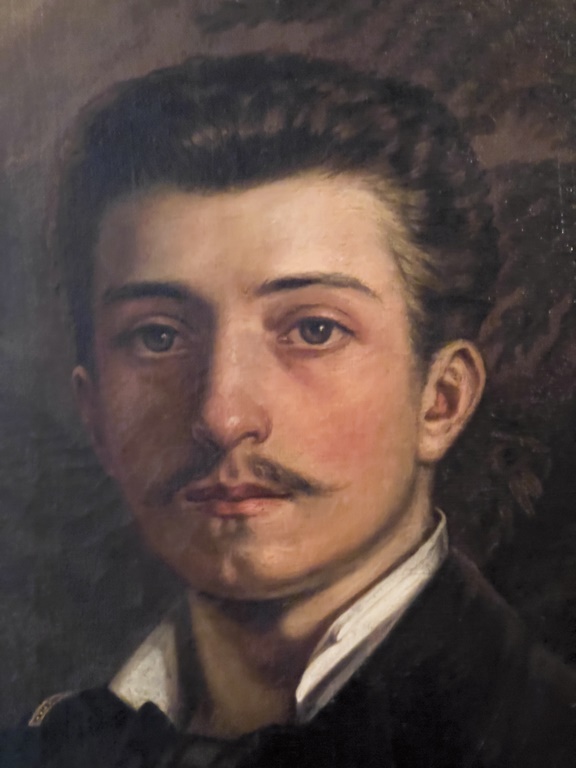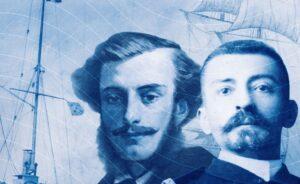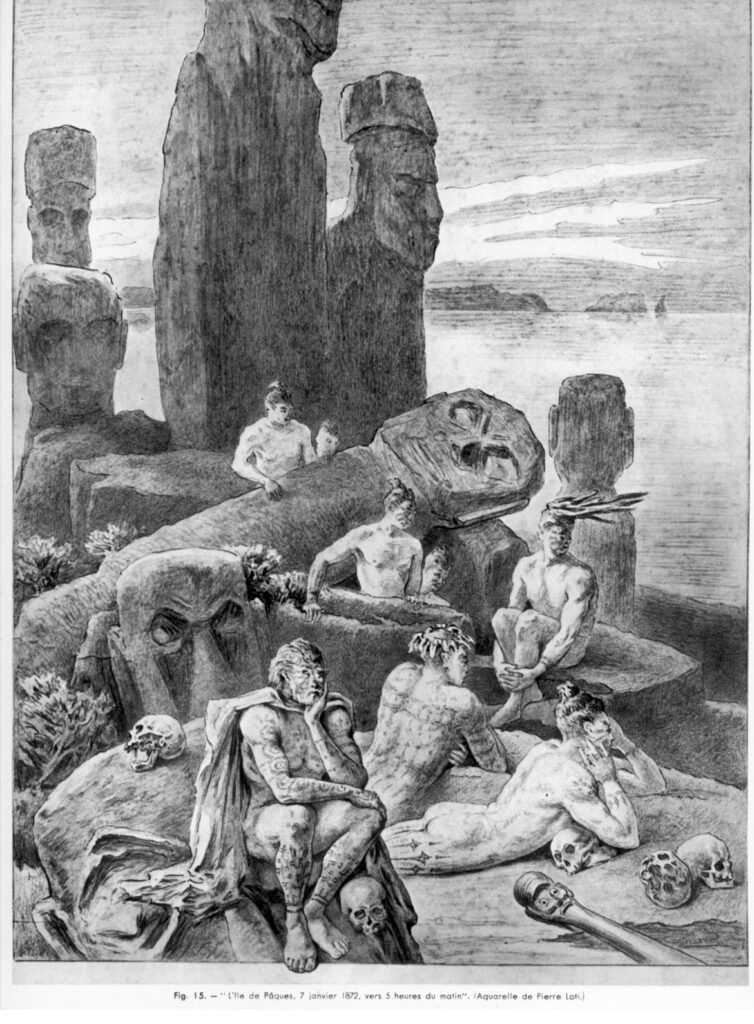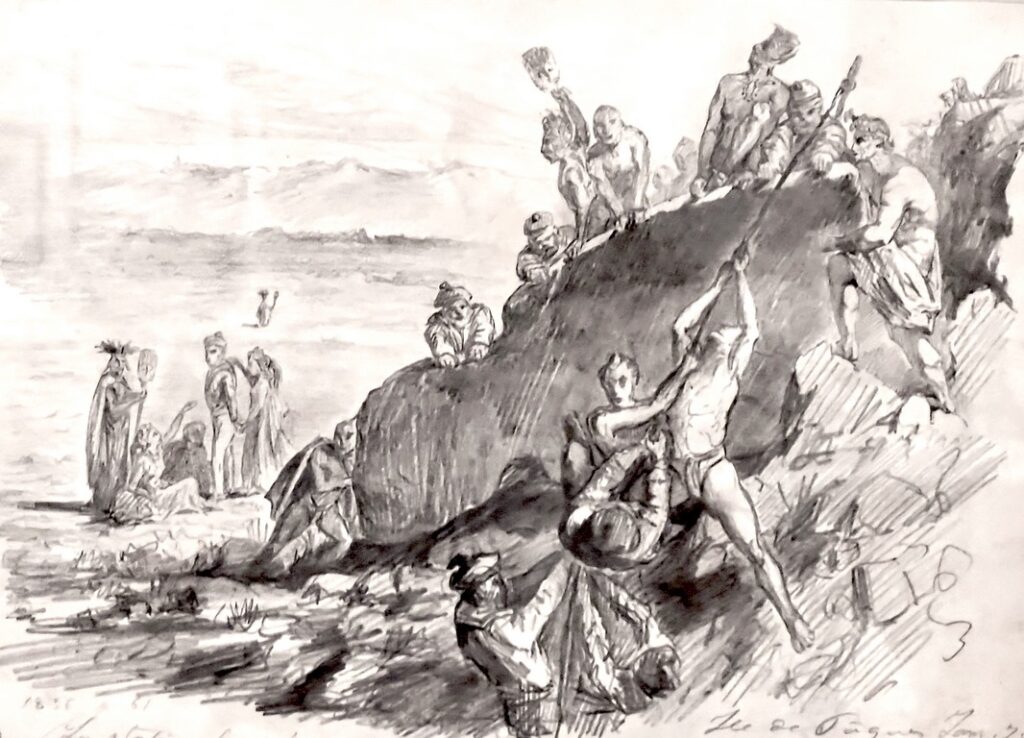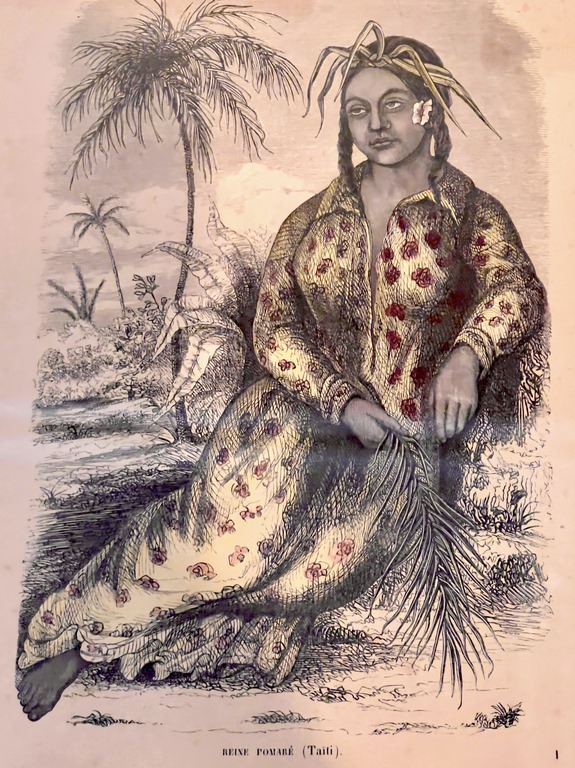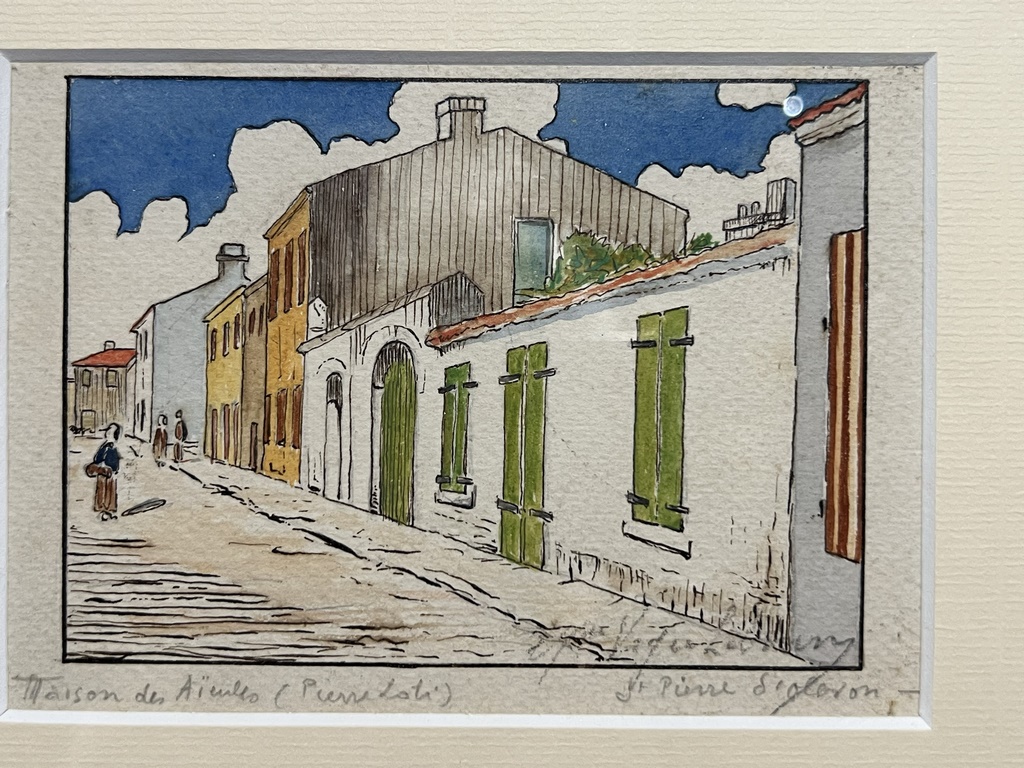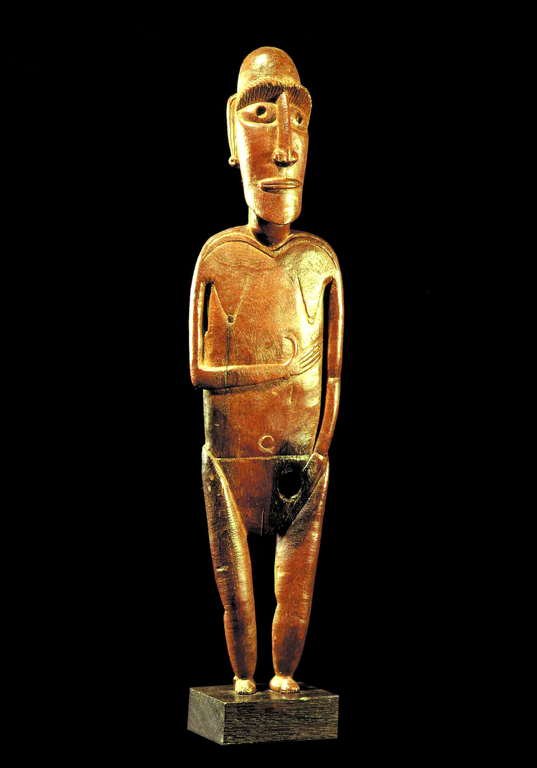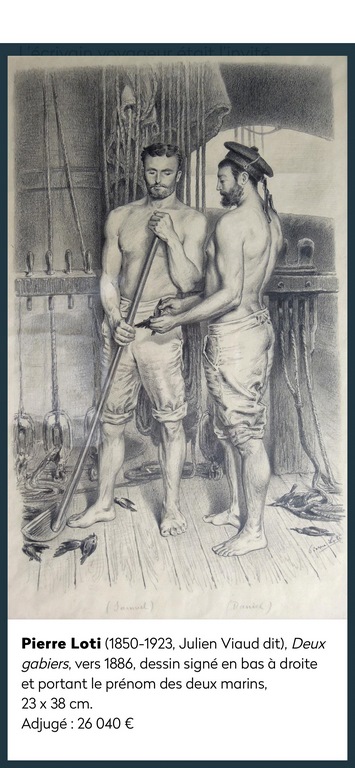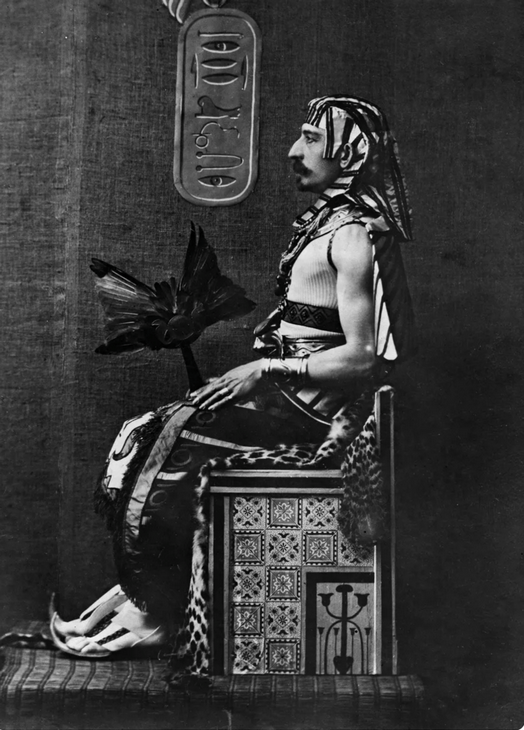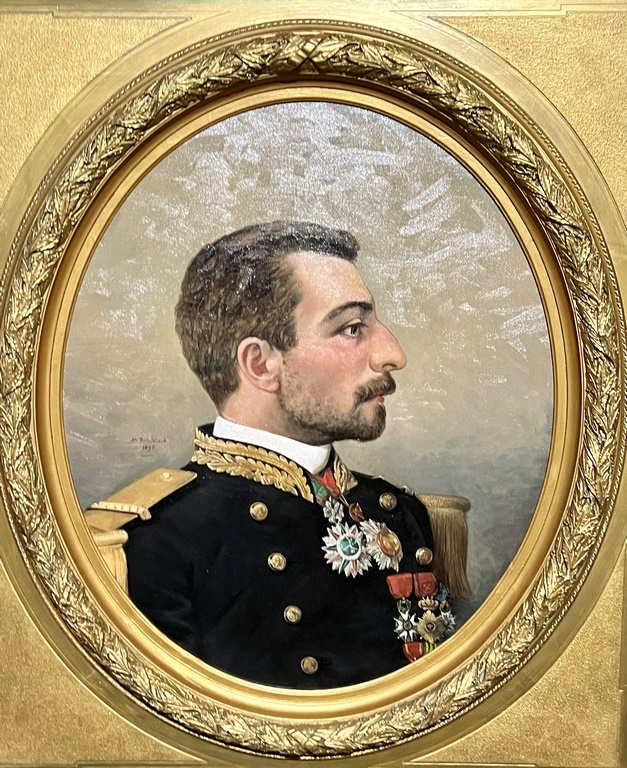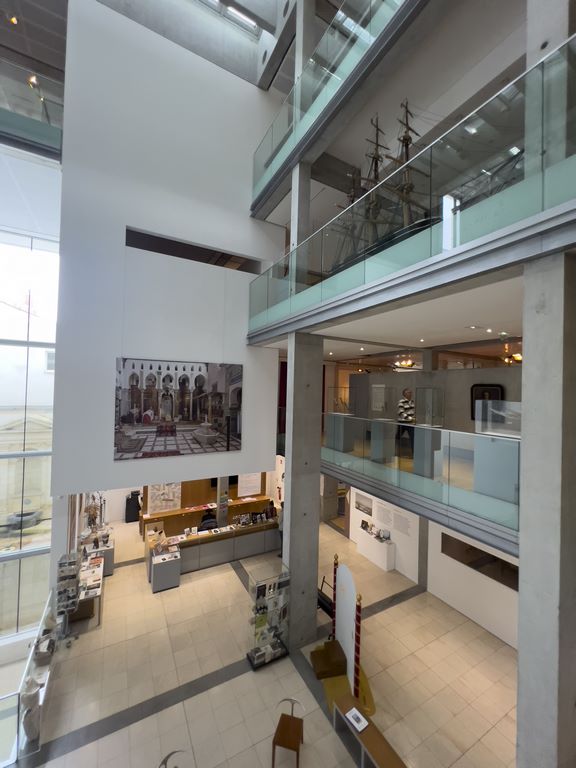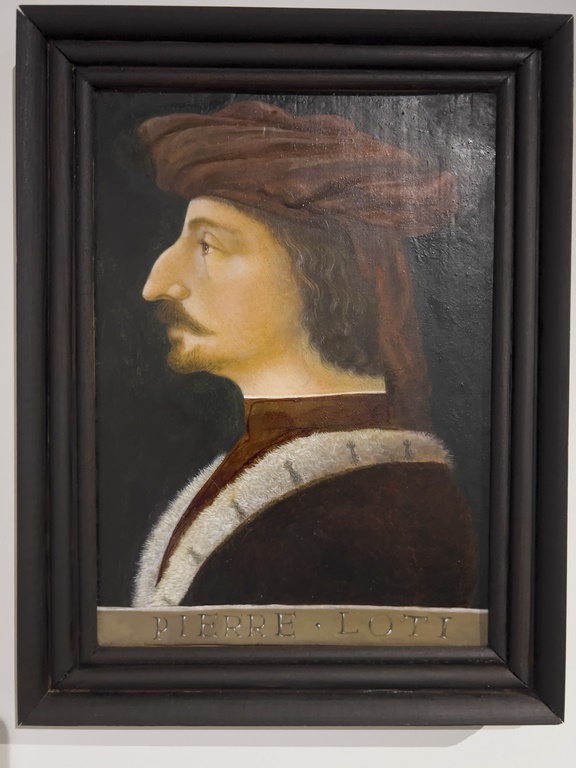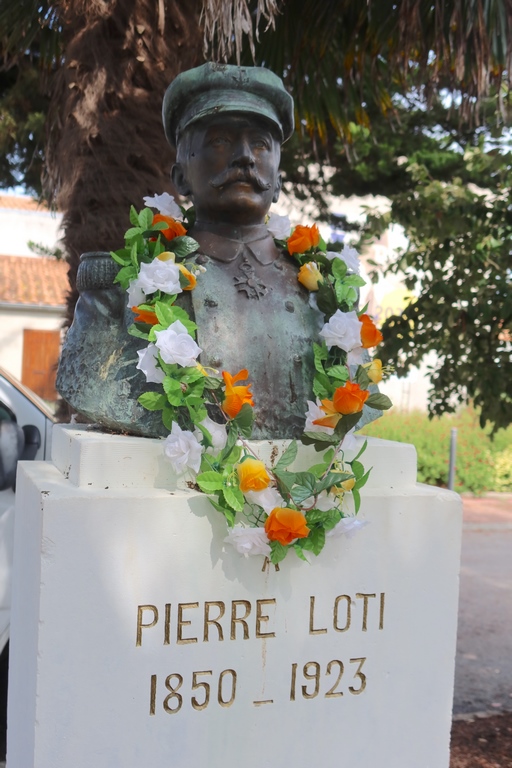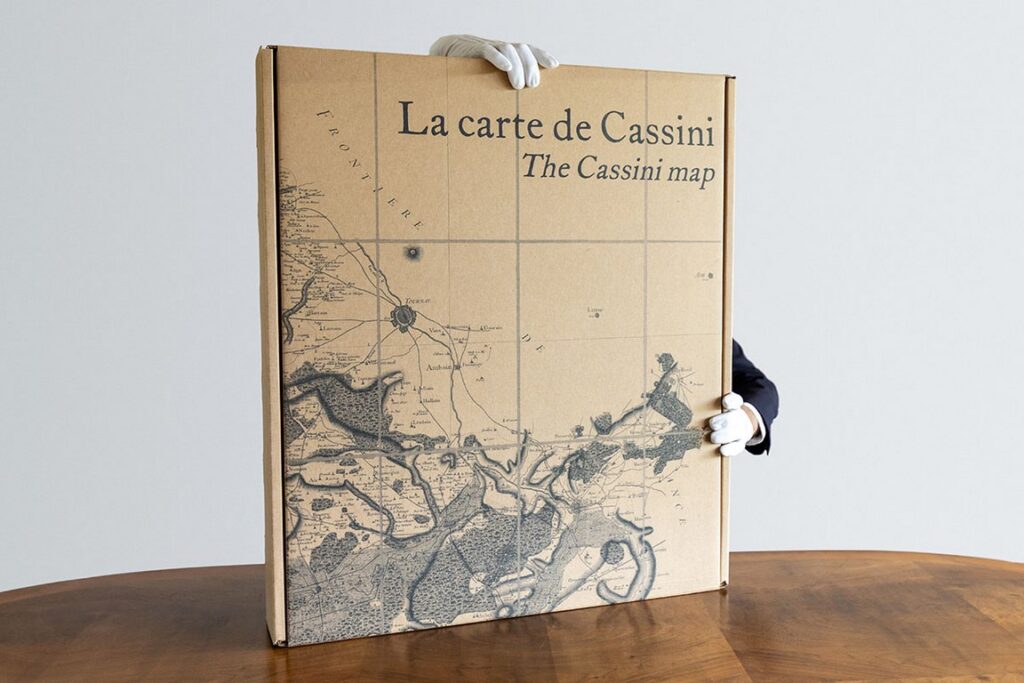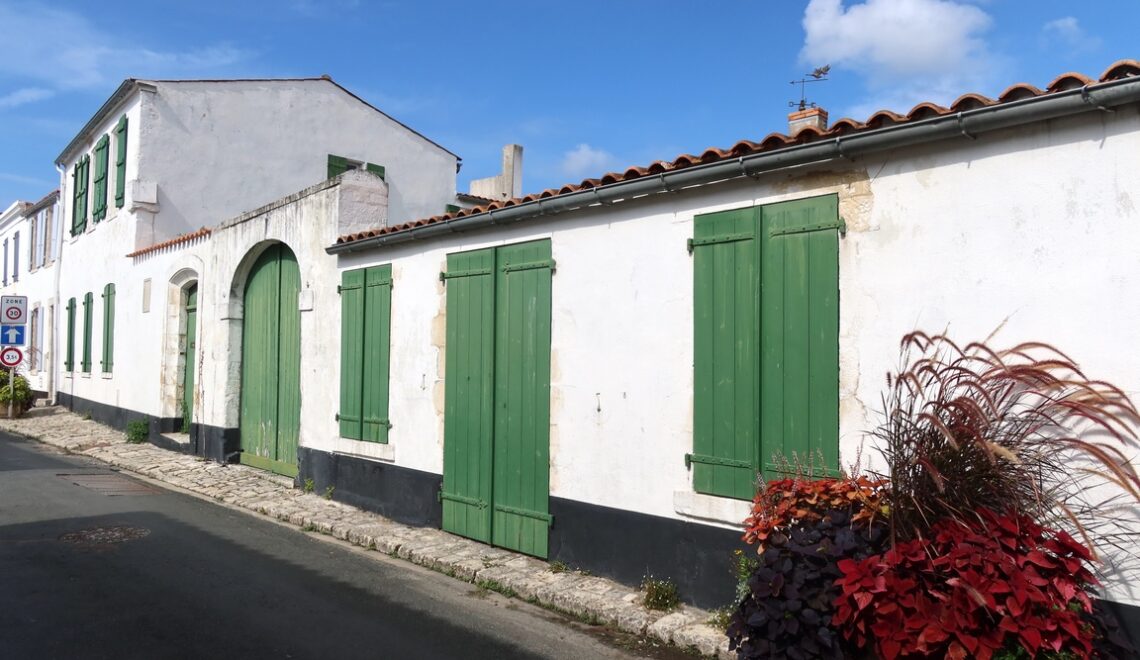
One hundred years after the death of Pierre Loti (1850-1923), Charente Maritime, Rochefort and Oléron are paying tribute to the many facets of this exceptional naval lieutenant with a series of events and exhibitions.
The Charente Maritime department, with its wealth of remarkable natural and historical sites, has been home to some outstanding personalities: René-Antoine Ferchault de Réaumur, inventor of the Réaumur alcohol thermometer and immortalised by a street of the same name in Paris; the good Doctor Guillotin, enemy of the death penalty despite his infernal machine; and Samuel de Champlain, sailor and founding father of Quebec in New France. But, particularly in 2023, the limelight in Charente will fall on a certain Julien Viaud, a naval officer from Rochefort who achieved immortality by translating his rich life of travel, extravagance and intrigue into a plethora of drawings, photographs, stories and best-selling novels, not to mention his full-length diary.
Loti: a seafaring writer
For 43 years, from the age of 17 until his retirement at the age of 60, Julien Viaud, known as Pierre Loti, sailed in the French navy and wrote extensively. Sacha Guitry is quoted as saying "he is the only writer known to have needed a squadron to travel ".
In 1880, Julien Viaud published the "Loti's wedding" , a Polynesian romance that sometimes reproduces word for word his travel notes written when he was 21. He was now thirty. Since 1876, he has taken the name of Pierre Loti. Under this pseudonym, he went on to enjoy huge publishing success. The previous year he had published his first novel, an exotic love story entitled Azyadé.
At the age of 41, elected to the Academy on his first try against Émile Zola, the mischievous sailor sent his peers, whom he considered to be mocking him, an ambiguous photograph showing him wearing a tiny underwear cover-up, an admission of the narcissism mixed with exhibitionism that was to characterise his entire social and literary life.
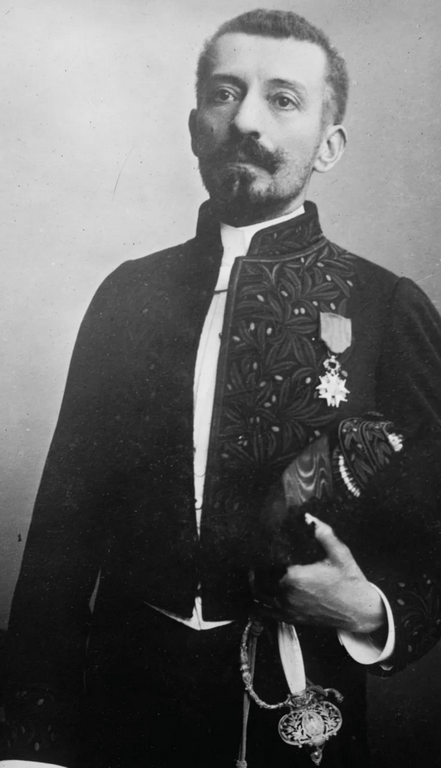

It is impossible not to compare his fate with that of Victor Hugo, who was elected to the dome at the age of 39 (albeit in his fourth attempt!) and who, like Hugo, was entitled to a state funeral, the ultimate recognition granted only to such writers. There is, however, one difference between these two successful authors: Pierre Loti is still waiting to be inducted into the literary Pantheon: the Bibliothèque de la Pléiade has shunned this author who is as plethoric as he is unclassifiable!
In an article in Le Temps published in 1891, on the occasion of Loti's election to the French Academy, Anatole France, who is perhaps the best-known of his contemporaries to have analysed him, wrote: " He is a sublime illiterate. He has genius and ignorance. He is a marvellous artist and a deplorable writer ", underlining the contrast between the richness and beauty of his style and the travel writer's lack of classical culture and intellectual rigour. Anatole France admired Pierre Loti, but he also criticised him for his taste for the exotic, the picturesque and sentimentalism.
Julien and Gustave Viaud: two brothers united by the sea
If you want to follow in the footsteps of the astonishing Pierre Loti in the Charente region, it will be useful to look through his impressive output to find the essential elements for understanding the man and appreciating the exhibitions devoted to him, both in Saint-Pierre on the Oléron's island and in Rochefort. Young people, keen on digital gymnastics and fed on television's exoticisms, have little interest in this literature, which is sometimes saddled with the infamous seal of obsolescence. While Pierre "le mal loti" is often ignored here, the mature and unrepentant reader will remember with nostalgia the tragic story of Yann the fisherman and Gaud la Paimpolaise, the heroes of "Fisherman of Iceland " (Iceland known only to him through the tales of the fishermen of Paimpol), translated into twelve languages, or " Ramuntcho "a hymn to a Basquitude both published in the Bibliothèque Verte.

Reading the "The novel of a child", also published in the Bibliothèque verte, is a collection of childhood confidences written by an author in his forties. It is a tribute to his native Saintonge, and a gateway to a Loti brimming with romantic and nostalgic sensibility, sometimes lyrical to the point of excess. We learn that he would have remembered that, having discovered walking at the age of one, he undertook a crazy dance, the first performance he would have given, for the sole admiration of his grandmother... Until the age of twelve, he was always performing, organising parties and disguises and cross-dressing, directing a show that was to be a great success, a miniature "Peau d'âne" . He plans to become an entomologist, as he is so passionate about the insects and butterflies that he collects; then, the last offspring of a Protestant tribe wanted to be a pastor, then a missionary when his interest in the exotic stories told by his brother Gustave, who was fourteen years older and had left for Tahiti as a marine surgeon, awakened. It was to him that he reserved the announcement of his definitive career choice: at the age of twelve, he wrote to his dear brother that he would be a naval officer. Hadn't his paternal grandfather died at sea shortly before the Battle of Trafalgar and his uncle drowned or eaten in Senegal after the sinking of La Méduse? While young Julien Viaud's precocious maritime vocation can be easily explained, the same cannot be said for his parallel literary vocation! Distracted, dreamy and melancholy, and reluctant to do homework both with a tutor and at the Collège de Rochefort after the age of thirteen, Loti was ranked second last out of twenty pupils in French narrative. He also boasted that he never read anything...
However, even on his first major voyage, which took the midshipman Julien Viaud all the way to Polynesia via South America and Easter Island, at the age of twenty-two he already demonstrated his great talent by meticulously writing a kind of report, both in his notes and in his drawings, in the manner of Cook or Lapérouse, on the disappearing Pascan civilisation! He even managed to communicate with the natives using gestures and Tahitian words and phrases learnt from the Picpus brothers' dictionary.
And Viaud becomes Loti
In the Marquesas Islands and then Tahiti, where he stayed for two months, he tried unsuccessfully to find hypothetical nephews, the two "natural" children that his brother Gustave had conceived with a native woman, the beautiful Tarahu. He recorded his Polynesian tribulations in detail, drew pictures, courted Queen Pomaré and, as a result of sunburn, found himself nicknamed "Roti", after a local pink flower... Which became "Loti" because Julien Viaud could not roll the "r" in Tahitian?
He would later use this nickname as his author's name, adding the first name Pierre for reasons that remain obscure, perhaps out of love for the island of Oléron and Saint-Pierre, where he bought "La Maison des Aïeules", a former family property in which he was buried and where no stranger was allowed to enter, as he wanted to finally die in solitude, far from the cemetery in Rochefort where his relatives and ancestors were buried, with the exception of Gustave, his beloved brother who died at sea of dysentery and was immersed near Ceylon in 1865.
On Easter Island, he exchanged his navy coat and hat for two Pascan "idols", hardwood moai, which were sold in a 1929 auction after his death. André Breton, who decried him, bought one of them, which was sold in 2003 at the Breton estate sale for 68,000 euros!
In another example of artistic flair, a Kota Mahongwé reliquary traded during a stopover in Africa was sold for €250,000 at Sotheby's in 2021.
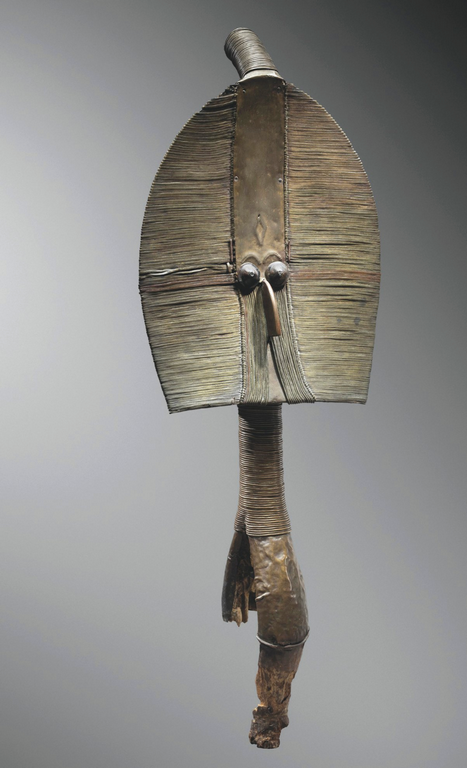
His drawing of "two deckhands", two handsome, solidly-built sailors, found a buyer in Saintes for €26,040 and was the star of a sale of various objects organised in October 2020 in aid of the "Friends of Loti", in the prestigious Abbaye des Dames.
Julien Viaud, like Pierre Loti, has always appreciated masculine and virile beauty, often described with meticulous emotion and, some would say, equivocation. His works were full of veiled allusions, and Goncourt went so far as to claim that Azyadé was a young Turk! Lastly, Loti made people smile, with his sometimes grotesque sultan's transvestites, or with his pharaonic ornaments and amulets, with his overgrown moustache, in grandiloquent poses like Aïda at a carnival.
His cult of finery, his cross-dressing fetish, was not just a sweet eccentricity easily forgiven by great men, like his bad taste for high heels, blush and pink cheeks. What a testament to this is his triple house in Rochefort, furnished and decorated with finds from all over the world! A schizophrenic's nightmare or the bric-a-brac of a dubious antique dealer?
" With a childish and desolate obstinacy, since my earliest youth I have tried to fix everything that passes, and this vain daily effort has contributed to the wear and tear of my life... I have wanted to stop time, to eternalise even the humblest things to which I have given the ghostly duration of mummies, and which, today, frighten me.... " (Prime Jeunesse)
The "poetry of the past" omnipresent in Loti would be "a transcendence of the search for what he was", according to writer André Dhotel.
Loti's real wedding?
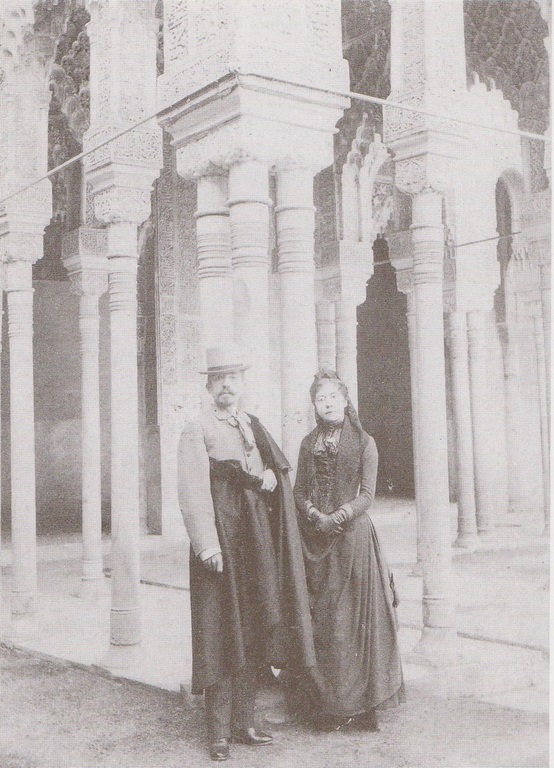
At the age of 36, Julien Viaud joined the norm and took a wife: Jeanne Amélie Franc de Ferrière, nicknamed Blanche, was 27 years old. "Protestant, noble, pleasant to look at, with some property and smaller than him" recruited by the family. Civil marriage on 20 October 1866 in Bordeaux. The couple were married under the dowry system: for Loti, the house in Rochefort, various items of furniture detailed by him in minute detail and the rights to books already published: Aziyadé, Le Mariage de Loti, Le roman d'un spahi, Fleurs d'ennui, Mon frère Yves, Pêcheur d'Islande; for Blanche, two houses in Bordeaux and various annuities. The religious wedding took place the following day, 21 October 1866, at the Chartrons church in Bordeaux. Before their marriage, Pierre Loti had been courting Blanche assiduously and confessed to his diary that he was going to visit "another beautiful woman from Bordeaux".
"When I see the bride decked out, I begin to understand, to realise that it's me who's getting married, seeing no-one but my dear Samuel, who's there in the temple dressed as a sailor and whom I shake hands with to give him this very special mark of affection in public... At dinner, people are worried to see me suddenly pale. I've never felt anything like it and I think I'm going to feel ill? A cruel regret for Brittany [A thought for the Paimpolaise who declined his advances?] that I would like to chase away, clutches my heart terribly...here we go, into the sad, cold night, chained to each other for life.... ". A son, Samuel, was born of this union. He would go on to have three half-brothers and sisters, later born of an affair between Loti and Crucita la Basquaise: in yet another mad move, he wanted to have Basque descendants, so much did he admire the country and its proud inhabitants.
Museum of the island of Oléron in Saint-Pierre
Home, place of inspiration and final destination, Oléron was always a refuge for Pierre Loti. Visitors are taken on a journey through the writer's memories, through personal objects that are rarely exhibited, accompanied by a soundtrack inspired by his writings. A silent film shows his state funeral and his return to Oléron.
The museum offers a series of tours and workshops, meetings and events linked to the temporary exhibition, for individual visitors during the holidays and for school groups throughout the year.
This exhibition runs until 22 February 2023.
Opening times and prices : www.musee-ile-oleron.fr
Rochefort: Hèbre Museum
The ultra-modern Hèbre Museum in Rochefort was designed by architect Pierre-Louis Faloci, creator of the term "museum" global space ". The architect kept only the façade of the Saint-Clément town house, behind which he built the current museum space. It houses an interesting and rich exhibition entitled "And Julien Viaud became Pierre Loti, Flora's voyage to the Pacific, 1872″, devoted to the journey of the young naval cadet Julien Viaud in the Pacific Ocean. It recalls his first voyage to the Antipodes, in a three-masted frigate that had been "modernised" by the addition of a steam engine, a voyage during which Loti discovered Easter Island, the Marquesas Islands and Tahiti.
He made his literary debut during this adventure, publishing texts and drawings. The reconstruction of his cabin on board and the original drawings he made at Easter and in Tahiti were reprinted after "improvement" in the sensational magazine "L'Illustration", the very first publication by the young midshipman. The exhibition includes a number of the countless more or less exotic objects brought back from the voyages and expeditions, as well as a few disguises and a number of portraits signed by the talented Marie Bon, Julien's sister who introduced her brother to drawing and the piano, which he would have loved to have played.
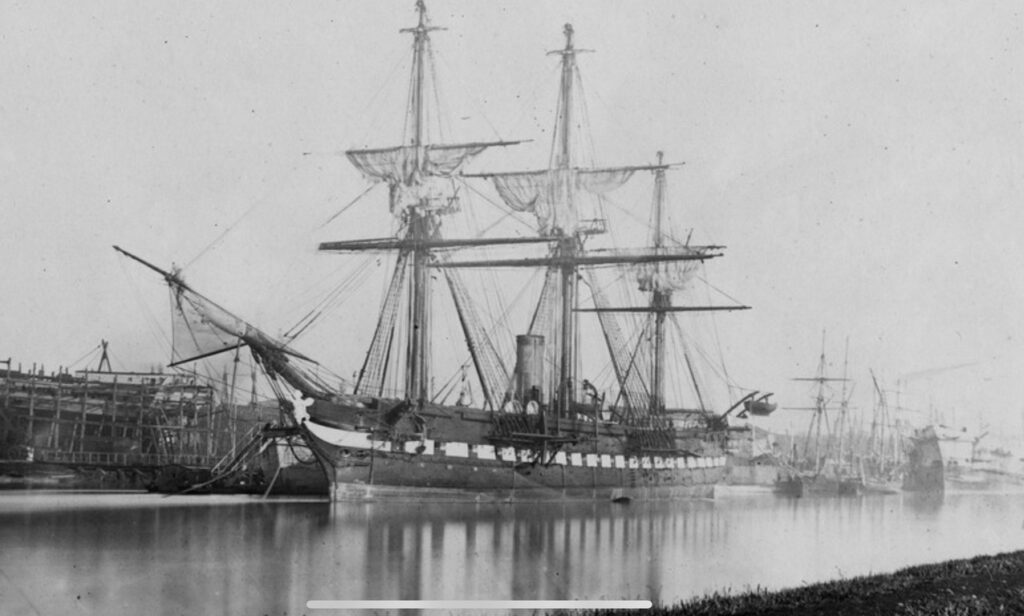
The exhibition is rounded off by a number of objects from the triple Maison Loti (rue Pierre Loti!), including paintings by Marie Bon, original drawings, a wardrobe of disguises, including his academician's costume and sword, and above all a cupboard of moving souvenirs found in the galley of the Loti house, where Julien Viaud piled up a motley bric-a-brac of various mementos, including, wrapped in paper shrouds, the remains of animals he loved or found, a cat, birds, a sweet... all testifying to his admitted inability to thwart the passage of time.
A 3D reconstruction of Loti's house, which is constantly being renovated, won't make up for the frustration of not being able for so many years to access the grail of visiting his abracadabulous museum of a world dreamt in the image of his teeming brain.
Musée Hèbre https://www.ville-rochefort.fr/hebre-musee-et-patrimoine-0
Rochefort: Pierre Loti as seen through the eyes of contemporary art
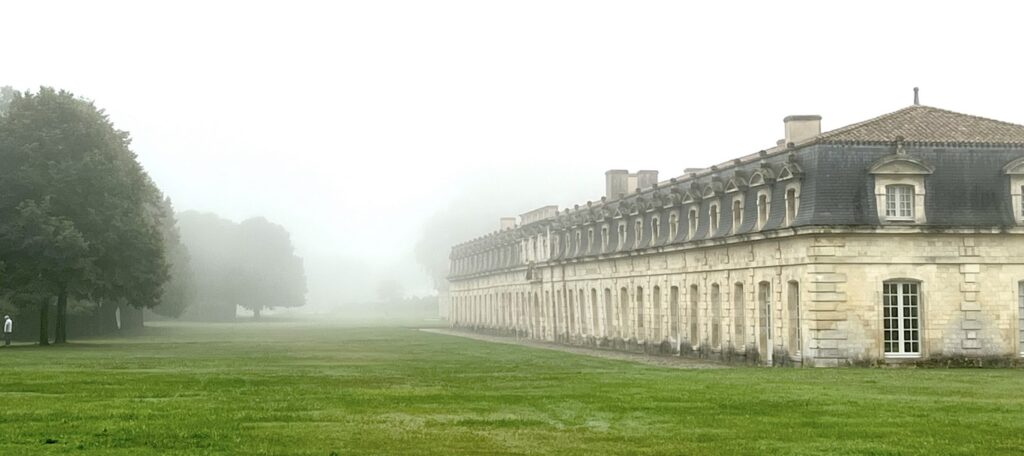
During your visit to the Corderie Royale (royal rope factory), you will discover the exhibition Surveying the interval organised by visual artist Jean-Michel Alberola. Accompanied by 9 young artists, he is proposing " to reactivate the thinking of the writer-traveller". Invited to confront the exotic world of Loti, they set out to give us their own perception of it. Each has chosen a "common thread" of the character's "life" (the hand, the house, the trip to Japan, cross-dressing, childhood, reincarnation, etc.). "Their combined visions are likely to shed new light on this prolific 19th-century novelist, who has been somewhat forgotten by our contemporaries." . But have the participants read Loti again?
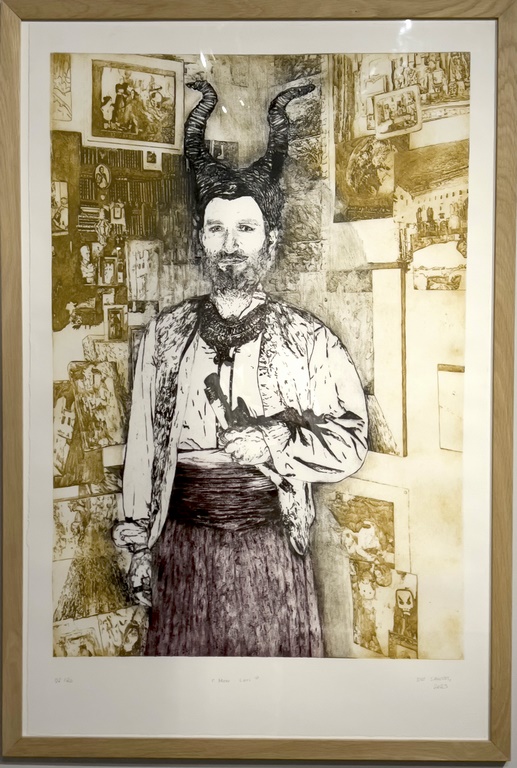
The artists : Agathe Dos Santos / Ariane Alberola / Carmen Ayala / Jean-Michel Alberola / Joséphine Ducat-May / Juliette Green / Lucie Baumgarten / Malo Chapuy / Solène Rigou /Théodora Kanelli.
The exhibition Surveying the interval (11 February 2023-07 January 2024) may seem out of step with its ambitious objective, with interesting but uneven and even slightly haphazard productions.
https://www.corderie-royale.com/
Why does Pierre Loti never smile in photographs, drawings or paintings?
The question was put to chatGPT, the notorious home of artificial intelligence prowess. Here is its answer:
"There is no definitive answer to the question of why Pierre Loti never smiles in his photos, but we can put forward a few hypotheses based on his biography and his work. Pierre Loti was a melancholic and nostalgic man, who often expressed his feelings of loneliness and dissatisfaction in his novels. He wrote : "I was born with an incomplete soul, one of those souls that are always dissatisfied with everything, that never rest, that never get attached"..
Pierre Loti was also a complex and mysterious man, who liked to create different personalities for himself depending on the place and circumstances. He used several pseudonyms, including Pierre Loti, inspired by a Polynesian flower. He also adopted a variety of costumes and accessories to portray himself in his photographs, such as a turban, a sword or an oriental hat.
Pierre Loti lived at a time when photography was still in its infancy, requiring long, still poses. It is possible that Pierre Loti chose to keep a serious, impassive face to avoid blurring or frozen expressions. He may also have wanted to give his portrait an image of dignity and gravity, in keeping with his status as a writer and academician".
These are just a few of the reasons why Pierre Loti never smiles in his photos. Of course, these are conjectures based on secondary sources, not on direct testimony from the writer himself. Perhaps Pierre Loti simply had a different conception of smiling than the rest of us, or perhaps he smiled more in real life than in his photographs. Whatever the case, his unsmiling face helps to create an aura of mystery and fascination around his personality and his work.
How would you define Pierre Loti's literary style?
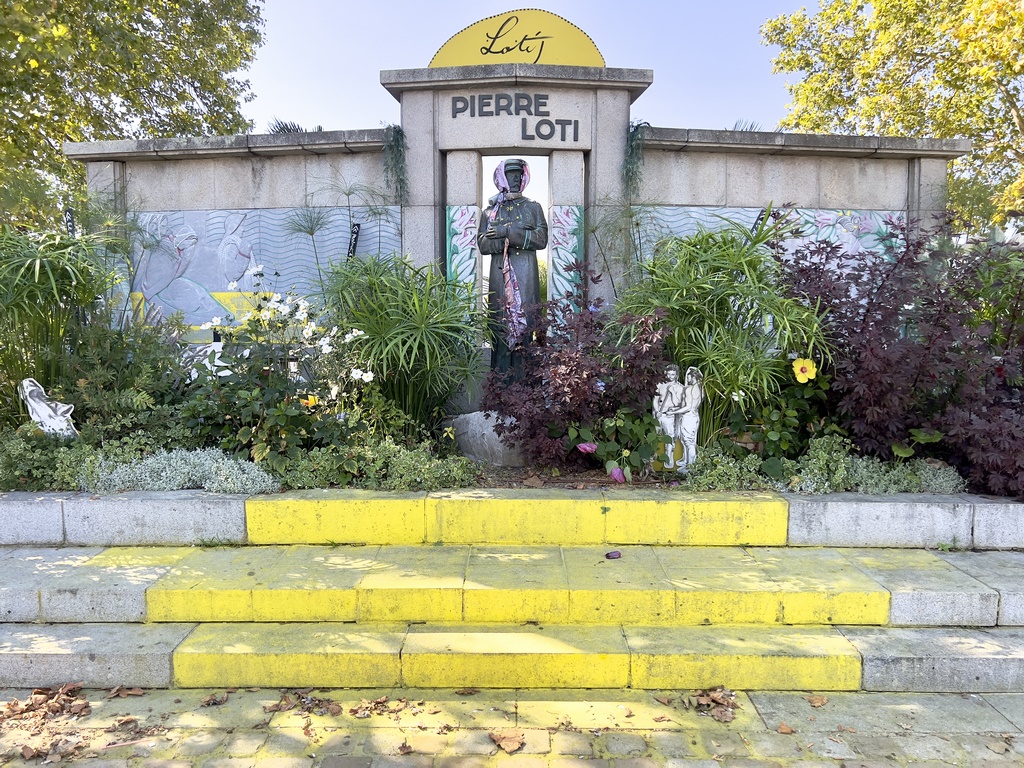
Once again, ChatGPT has come to our aid. Here is his analysis:
"Pierre Loti's literary style is difficult to classify, as it blends several influences and genres. Pierre Loti is a writer of realism and naturalism, who seeks to describe with precision and objectivity the places, characters and situations he observes. He drew on his personal experience, his travels, his notebooks and his photographs to give a faithful account of reality. He often uses technical or exotic terms to reinforce the realism of his stories.
Pierre Loti was also a writer of romanticism and symbolism, who expressed his feelings, impressions and reveries through poetic and evocative writing. He uses the senses, colours, sounds, smells and light to create spellbinding, evocative atmospheres. He uses symbols, images and metaphors to suggest ideas and emotions. His sensitivity to life is melancholic, nostalgic and disenchanted.
Pierre Loti was a writer of the exotic, exploring distant cultures, civilisations and landscapes. He was interested in the differences and similarities between peoples, the relationship between the West and the East, and the clash between tradition and modernity. He shows both the fascination and repulsion that otherness and diversity inspire in him. He is intellectually curious, open-minded and respectful of other cultures.
These are just a few of the elements that could define Pierre Loti's literary style, an original, rich and varied style that reflects his complex personality and his prolific output.
Text and Photos Sylvain Grandadam
Contact: www.charentes-tourisme.com
Some works by Pierre Loti :
Travels (1872-1913) - New edition - Bouquins Editions. https://www.fnac.com/a11094041/Pierre-Loti-Voyages-1872-1913-Nouvelle-edition https://www.fnac.com/a11094041/Pierre-Loti-Voyages-1872-1913-Nouvelle-edition
Aziyadé / Phantom of the Orient - Folio. https://www.amazon.fr/Aziyad%C3%A9-Fant%C3%B4me-dOrient-Pierre-Loti/dp/2070381471
The novel of a child followed by Prime jeunesse-Pocket.https://www.amazon.fr/roman-dun-enfant-prime-jeunesse/dp/2070403769/ref=pd_lpo_sccl_3/260-4302432-6001000?pd_rd_w=ZHIhm&content-id=amzn1.sym.1bec6179-e78a-4900-91c1-a0cbdfe0e062&pf_rd_p=1bec6179-e78a-4900-91c1-a0cbdfe0e062&pf_rd_r=K7J5RZ9B8NBESDRK46QP&pd_rd_wg=DwD3x&pd_rd_r=ba8db23c-0db7-44bb-baba-0f4101f7921c&pd_rd_i=2070403769&psc=1

